From the Countrysides of Belgium and France to Bars in Brussels

Memories can be tied so closely to taste, sometimes a Columbus dry hopped beer, for example, can instantly take me back to my elementary days in my hometown of Aberdeen, SD sitting in the highest possible section at the local college basketball games (Northern State University) eating green sprees. There’s something incredibly permanent and personal about tastes when you can associate them with memories, and like how songs from your youth can transport you, flavors and aromas from beer can do the same, for me this is often candy-like aromas from hops.
In an attempt to hold onto the inspirations and memories I had during my short but incredibly fun time in Europe, I thought it would be a good exercise to blog of my time there. Hopefully, being at the source of some of the best wild beers in the world will dig their way into my memory bank and I can draw upon the sites, smells, and tastes years from now when enjoying a Gueuze! The trip certainly inspired a few new brewing ideas and calibrated my palate a bit towards what I look for in mixed-fermented beers.
The first stop was Paris, an incredible city that taught me not only to enjoy an espresso instead of a giant cup of coffee and to eat sourdough bread morning lunch and dinner. Paris also taught me to ignore beer for a bit and explore what they do best, wine. In our case, we focused our tastings on natural wine, something I was unfamiliar with prior to the trip and now something I can’t stop thinking about. Natural wine is essentially wine made naturally, that is without pitching yeast, enzymes, sulfites or even undergoing filtration. Similar to how wine was made thousands of years ago, natural wine is fermented with the naturally occurring yeast and bacteria on the grapes, which wild beer drinkers know can produce with interesting flavors and aromas.
As we sat sipping natural wine at a place called Septime The Cave (on more than one night) in Paris, a great place where the walls are covered with floor to ceiling temperature controlled cabinets stocked all with natural wine bottles, I couldn’t help but to start connecting aspects of natural wine to beer. Both in the process, appearance, and even with some of the aromas/tastes. For example, some natural wines were incredibly cloudy, which I understand has some debate among winemakers as to whether this is from bad practices or a result of the process (sound familiar…). Orange wines stood out as particularly interesting to me, these are not made with actual oranges, rather they are white wines that are made like a red, where the skins of the grapes maintain contact during fermentation which takes a white wine into orange/amber territory. Some of the orange wines had intense jammy-like characteristics, likely having something to do with bioflavoring from the skins of the grapes interacting with natural Brettanomyces on the grapes. Some of these wines also exhibited some earthy and at times barnyard funk aromas that went well with the fruity, often orchard-like smells. If I think of some acidic beers I enjoy, they often have certain aspects of a good natural wine, subtle funk and intense fruit flavors, with just a little acidity.
I am by no means a wine expert and certainly that holds true for natural wine (having just learned about it), but I’ve been experimenting lately by combining wine methods into brewing beer (like blending wine yeast strains into hoppy beers to try and enhance some bioflavoring), but this experience has only escalated this interest. Enhancing fruity flavors in beer via bioflavoring with natural bacteria on grapes and combining that with hops, or just a blending must or organic grapes into a pale sour, for example, seems like an interesting way to start experimenting with blending natural wine and beer.
Going 180 mph by train through the farm-filled green countryside of Belgium, where historic brick farmhouses seem the norm, we were off wine and about to start our beer-focused part of the trip. Arriving at Brussels Central early in the afternoon, we had to show incredible will power to not first go the 1.5 miles to Cantillon. The first stop was to pick up our rental car, which would allow us to tour the countryside breweries in both France and Belgium. With manual transmission cars dominating the rentals, I confidently accepted the challenge to drive, despite not operating a stick for over a decade. After almost coming into the slowest and most polite collision ever with a trolly car after stalling going over the tracks, we opted for trading in the manual for an automatic. A move that allowed both of us to take turns driving, a smart move when drinking at breweries, but it also kept us alive.

Cantillon was one of my most anticipated stops, and it didn’t disappoint. From the musty almost sour aroma that seemed to dominate the air to the aged wooden rafters filled with cobwebs, it became immediately clear that this was the real deal. We spent most of our time ordering bottles to enjoy on their barrel table tops that weren’t available to for take home purchases. It was fun to watch people strategically order their take home bottles and worry if their suitcases were going to be over weight.
The drinking atmosphere most places in Belgium and definitely at Cantillon were completely different than anything I’ve experienced in the United States. Here, you might show up to a brewery and keep to yourself only to interact with your phone. At Cantillon, once a bottle opens it becomes a social affair. Both times we visited the brewery, we ended up sharing our bottles with those around us and they did the same. Whether people didn’t have cell service or they were just enjoying the atmosphere, phones were down, strangers were sharing beers and engaging in conversation in a way I wasn’t used to, but certainly enjoyed.
Traveling with only a small carry-on size suitcase, I had very little room to travel back with bottles. Being interested in collecting some of the yeast and bacteria that make these beers so special, I decided to travel around with sturdy pre-sanitized tubes for collecting dregs of some of the best bottles. My first victim came from a bottle of Cognac barrel aged 50°N-4°E from Cantillon, a name coming from the geographic location of the brewery. Several people spotted me doing this and it was pretty obvious who were the drinkers in the tasting room and who were brewers!
After spending some time in De Haan, a beach town in West Flanders and a enjoying a short stop in Bruges, a scenic and historic medieval-looking town, we continued our beer tour with a stop at De Dolle in Diksmuide, Belgium. Drinking a side-by-side of Oerbier and Oebier Special Reserva outside behind the brewery was hard to beat. All by ourselves, we enjoyed the view of farmhouses, cows, and more of that Belgium green. The relaxed nature of all these breweries was incredible.
The next highlight of the trip was visiting Brasserie Thiriez, a small brewery located in the countryside of France. Thiriez is owned by Daniel Thiriez and is famous among brewers for being the home of the popular French Saison yeast strain (Wyeast 3711). Lucky, we were led on a private tour of the brewery from Daniel and even stayed in their guest room that night as part of the bed and breakfast side gig (a very cool experience). How many breweries in the United States do you hang out and have beers with the owner, get a personal tour, stay in their home, and wake up and chat over their kitchen table over fresh sourdough bread, jam, and coffee? Both Daniel and his wife made this part of the trip extremely memorable.
The story of how the French Saison yeast originated was something I couldn’t help but ask Daniel about over a beer fermented with that very strain (which struck me as having a much larger hop spice and firm bitterness from the heavy hot-side hopping). It turns out when the brewery was in its baby stages, Daniel described the type of beer he wanted to make to a yeast lab and they gave him four to try, can you guess which one he liked the most? In further conversations, I couldn’t help but to speculate that the goal for Daniel was never to build a massive brewery that dominates the market, rather, to make enough beer and profits to get by comfortably while maintaining as much work-life balance as possible (something that had likely gotten better as the brewery matured). This concept is one I both appreciate and think helped pave the way for the relaxed and welcoming atmosphere they built. After all, if you’re too busy to ever enjoy your beer, customers, and life, what’s the fucking point of owning the brewery?! A lesson I hope to remind myself on a regular basis as Sapwood Cellars finds its footing in Maryland.
Thanks to a great recommendation from a commenter on a Facebook post I put up while on the trip, our next (unplanned) trip was to a small cafe called In de Verzekering tegen de Grote Dorst (In the Insurance against Great Thirst) in Lennik, Belgium. This place was awesome for so many reasons, one being that it had one of the best gueuze, kriek and lambic selections I’ve seen. It’s unique because it’s located across from a church and only open on Sundays and church holidays (and only from 10 AM to 1:30 PM), for “those on their way to church, and those who say they are going to church, but don’t make it.” It’s a fun mix of locals coming over after church to have a tart beer and beer fans from around the world. I talked myself out of ordering a €12,00 Allagash Coolship Resurgam and opted for some more location appropriate options, a favorite was a 2013 Cantillon Lou Pepe Gueuze (hopefully the bugs are healthy after 4 years in the bottle because I added the dregs to another vial!). Only a 30-minute drive from Brussels, I highly recommend checking this place out!
After a short trip to Cologne Germany, where we consumed a fair amount of kolsh and managed to get our rental car up to 125 mph on the Autobahn (not in that order) we then drove back to Belgium where we stayed a few nights in Brussels. The selection in the beer bars in Brussels was incredible. A favorite spot called Moeder Lambic actually had Cantillon Cuvée Moeder on tap, which Cantillon brews just for the bar. After ending up at Moeder Lambic on back-to-back nights, a favorite and maybe less hyped brewery that kept being one of my favorites of the night was from Gueuzerie Tilquin. A particular favorite from Tilquin was Oude Pinot Noir, a spontaneously fermented beer that spent time with 350 grams of Pinot Noir grapes by liter of lambic, exactly the type of beer I was daydreaming about while drinking natural wine in Paris. The combination and processes of natural wine and wild ales works so so well together!
Saving perhaps the best for last, our last brewery stop was a quick train ride away from downtown Brussels to Brouwerij 3 Fonteinen. There was a sophistication at 3 Fonteinen that stood out to me, perhaps it was in part their presentation of bottles and Armand Debelder himself insistence on pouring them for you in a wine-like way. Heavily carbonated bottles meant there was constant loud popping going on, which always made you look to see what was being poured. One of the best beers I had on the entire trip was their 2008 Oude Geuze (a blend of 2005, 2006, and 2007) and overall just some of the best consistent un-fruited acidic beers I’ve had in general.
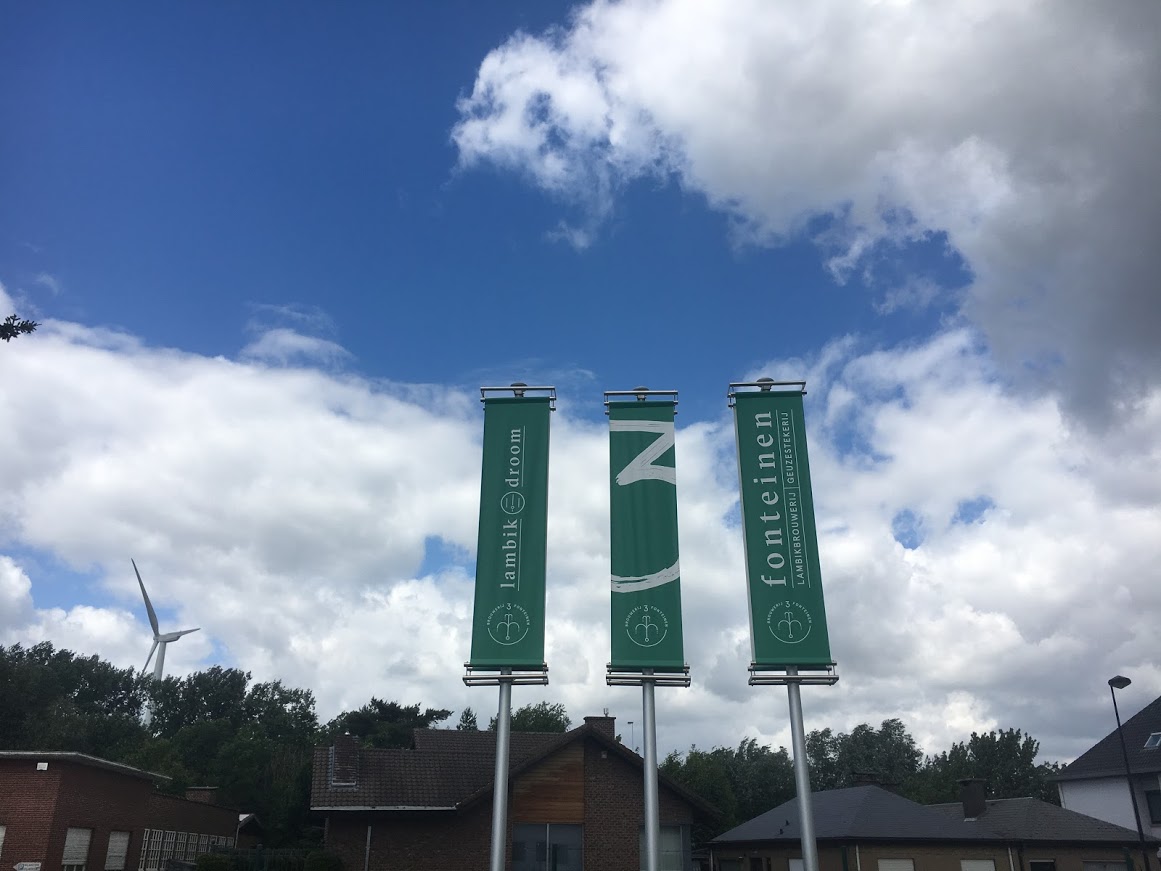
I couldn’t get over the vintage menu at 3 Fonteinen, so when I had an opportunity to ask how they go about holding so much beer back and how they store it, etc., the answer led us on a great tour around their facility, which in some parts was just a massive cellar for aging bottles. It’s amazing to me how far in the future some of the beers they are brewing/aging today will take to actually be available for purchase. It’s such a unique situation to first have the blending skills they show off, but also the patience and willingness to sit on beers for years before even thinking about putting them before consumers in addition to the financial ability to wait. If you think about it, part of batch brewed today for an Oude Gueze blend won’t even be blended and bottled until 2020 and if they decide to let the beer develop even more in the bottle and add it to their vintage menu, it might not even be for sale until 2023 at the earliest and possibly as late as 2033!




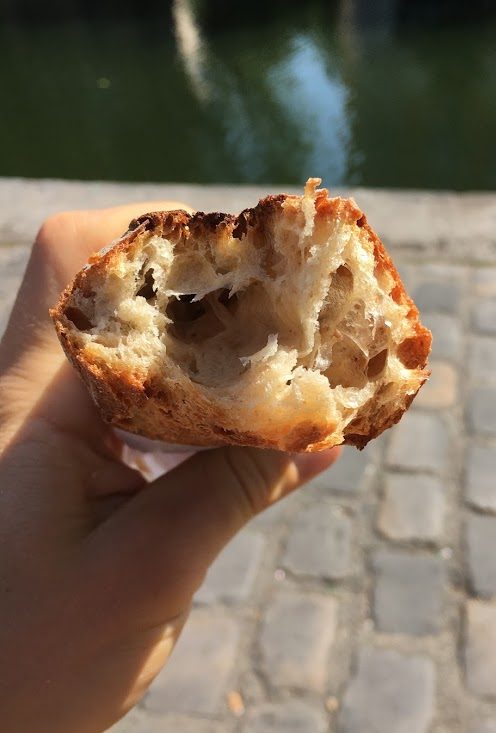








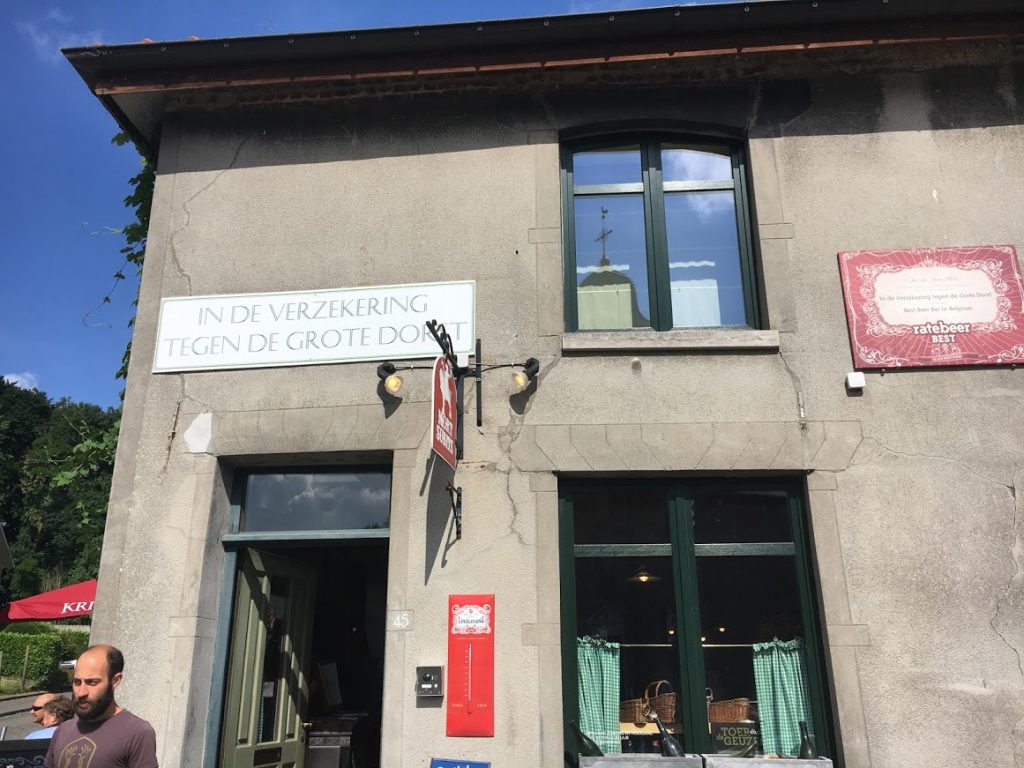
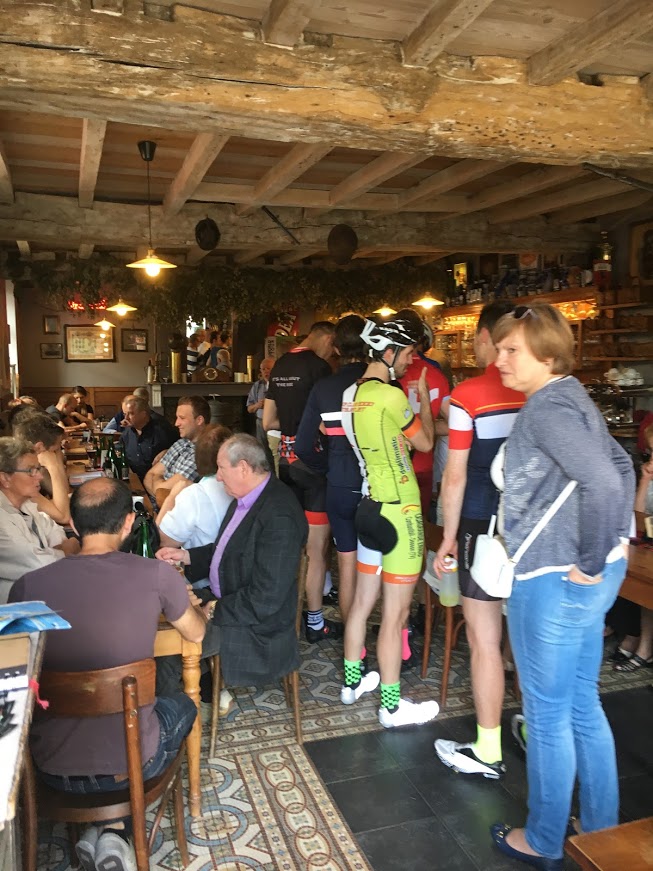



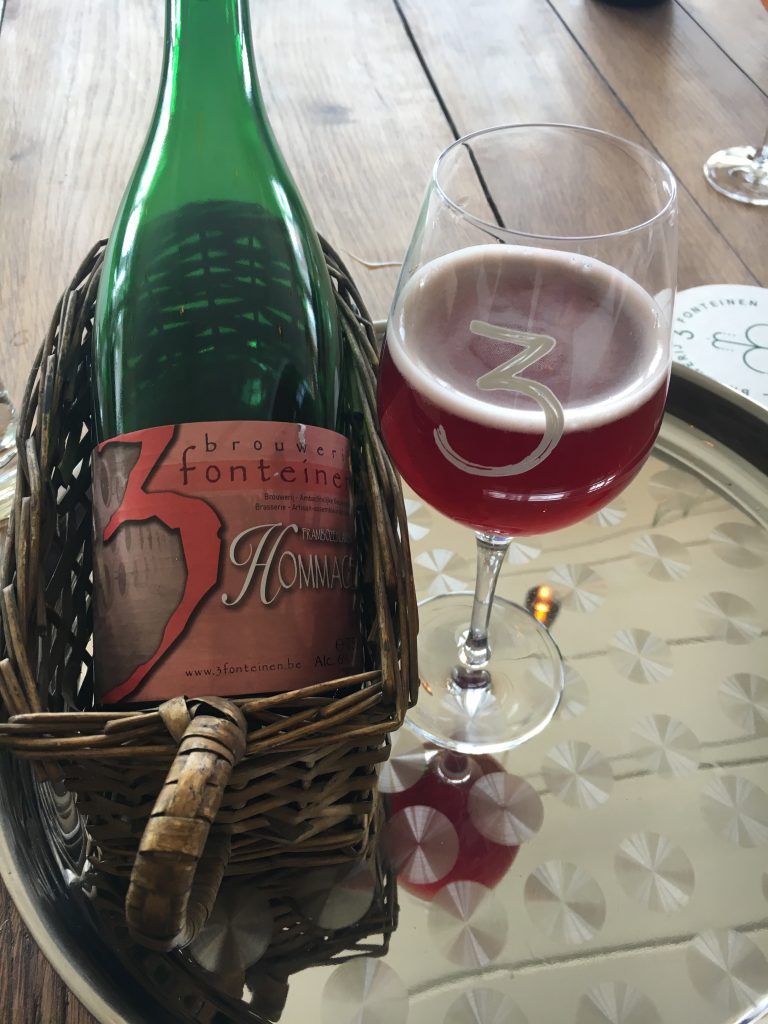


-610x915.jpg)
What a nice experience! I’m planning to visit Belgium and The Netherlands soon. Did you find any interesting place in Amsterdam? (beer related of course…)
Thanks for sharing. Cheers!
I had a good time checking out a place called Proeflokaal Arendsnest. It’s a good beer bar that carries mostly (if not all) beers from Dutch breweries!
I can also vouch for Arendsnest. I think it’s the best in the city. Not beer, but check out De Drie Fleschjes. Fantastic jenever and cool atmosphere
So, um, did we sit at the same table at Cantillon and share beers? We were there that same day and shared a 50N 4E with our table mates and the person we were sitting with put the dregs in a vial. Small world if so.
More than likely! I believe we were there June 2nd, does that sounds about right for you?
Yep, June 2nd, early afternoon. How crazy. I’ve been reading your site for awhile now. Love your work. I’m really glad we could share some amazing beers that day. Hope something good comes out of the dregs you grabbed. And thanks for the recommendation on Septime the Cave. Cool place.
So jealous. It looks like a fabulous trip. Thanks for letting me travel vicariously.
If you want to explore the meeting of Beer and Wine, you should try to get your hands on Italian Grape Ales, possibly the only and first fully Italian style where a portion of the fermentables come from the grapes. They lead to some fantastic beers both sour and clean. Bruton’s Limes, Barley’s Baccusardus Beer, Montegioco’s Tibir and many others. They’re up for consideration for BJCP certification so they may break out onto the market more and more soon.
If you’re not already familiar with Side Project (www.sideprojectbrewing.com), you may want to check them out. They make excellent wild, sour, and barrel-aged beer, and some of them are fermented with and/or aged on grapes. Their Foedre Beer is my all-time favorite sour.